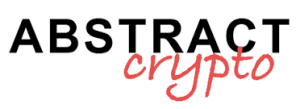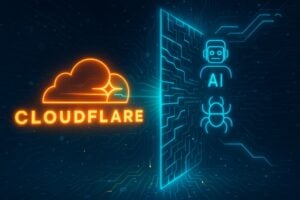A groundbreaking change comes from Cloudflare: the Internet infrastructure giant blocks major AI crawlers to defend online content. This decision redefines the balance between creators, tech companies, and consumers, promising to revolutionize the management and protection of data on the web.
Fight against AI crawlers: Cloudflare’s decision
Cloudflare has launched, from the first of July, an offensive against the main artificial intelligence companies that collect data from websites without authorization. As stated by the company itself, AI crawlers will be blocked by default on all new sites that adopt Cloudflare, unless the owners grant explicit permission. In the past, however, it was the site managers who had to actively exclude AI bots from collecting their data.
This inversion of logic protects over 20% of the web, the share covered by Cloudflare customers, and responds to the increasing reports of slowdowns and disruptions caused by extraordinary flows of automated requests coming from bots of big AI names like GPTBot from OpenAI and ClaudeBot from Anthropic.
Impact of AI crawlers: the numbers of the phenomenon
The volume of traffic generated by AI crawling bots has reached impressive levels. For example, GoogleBot has detected that Vercel, a cloud-hosting service, receives over 4.5 billion requests per month from these software. Unlike normal search engine crawlers, AI bots treat servers aggressively, visiting the same pages multiple times within a few hours or bombarding sites with hundreds of requests per second.
The result? Slower sites, access difficulties for real users, and a widespread feeling of being subject to a true “extraction” of content without rules or compensation. Numerous publishers and companies, from The Associated Press to Condé Nast to Ziff Davis, have denounced the practice of massive and unauthorized collection by big tech of AI.
New rules and technologies to defend the contents
The move by Cloudflare is not limited to a superficial ban. The company has indeed announced the use of machine learning and behavioral analysis to detect even the so-called “shadow scrapers,” disguised bots that try to bypass conventional blocks. In this way, not only the declared crawlers but also the more sophisticated attempts at scraping will be intercepted.
Furthermore, AI vendors will now have to ask for permission before they can access the data, clearly indicating the usage objectives, whether for algorithm training or simple search functions. Cloudflare thus returns to publishers the ability to decide who can interact with their information.
The protests of the main publishing groups have favored the birth of this new policy. The current exclusion systems, such as the traditional robots.txt, are often ignored by AI bots, which tend to “mine” the web without following the rules of respect for digital intellectual property.
Pay Per Crawl: towards a new economic model for content
The revolution signed by Cloudflare also introduces another novelty: the Pay Per Crawl program. This system, currently in private beta phase, will allow publishers to set access prices for those who wish to use their content for AI training purposes. Access will be authorized only upon payment, or denied otherwise.
From a technical standpoint, Cloudflare will use the HTTP 402 “Payment Required” code, returned to non-enabled crawlers. A potentially effective solution, already ready for implementation thanks to its compatibility with existing web systems.
Reactions from the AI world and regulatory issues
The decision by Cloudflare directly influences AI companies, which have so far been reluctant to pay licenses or fees. Nicholas Thompson, CEO of The Atlantic, emphasized how until now companies could act with impunity, whereas now they will have to negotiate and recognize content ownership. On the other hand, some leaders in the tech world, like Nick Clegg of Meta, warn that the introduction of strict constraints could jeopardize growth and innovation in the AI sector.
The debate also extends to the regulatory level. A report from the Copyright Office recognized that certain uses of generative technologies can be “transformative.” However, massive collection without consent cannot be considered fair use. A position that has had significant institutional repercussions, including the immediate replacement of the head of the Intellectual Property Office by the Trump administration.
The future of online content protection
The initiative by Cloudflare reshapes the balance between those who create and those who exploit online content. The ability to block and monetize access to data gives publishers real power over where and how their works are used. As a result, many AI companies will need to reorganize data acquisition strategies and processes, pushing towards greater transparency and collaboration with the publishing world.
As the digital ecosystem adapts to this paradigm shift, it is likely that other major players in the infrastructure sector will follow Cloudflare’s example. This could trigger a new era in the defense of digital rights, where those who produce value are incentivized and protected. Questions remain about the timing and methods of adopting the Pay Per Crawl model and the effects it will have on the development of artificial intelligences.
In a constantly changing context, monitoring the evolution of anti-crawler AI strategies and actively participating in the debate becomes essential for all the entities involved. The war against unauthorized bots could be just the beginning of a new season for enhancing the web as a collective and sustainable asset.


